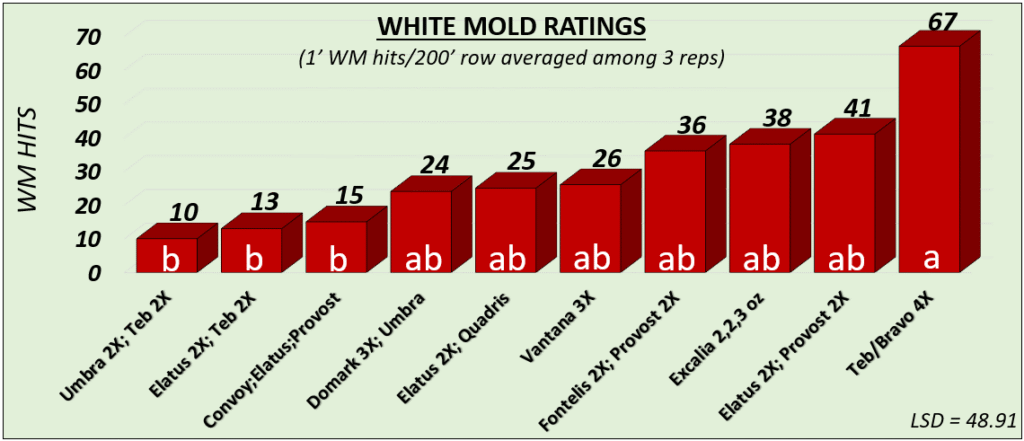
Teb/Bravo is an inexpensive fungicide option in peanuts however if you depend on it for your only white mold control fungicide, you will risk getting what you pay for. See below (local 2023 data), the bar on far right is a teb/bravo applied four times, and indicates significantly more white mold hits/200′ compared to other fungicide programs. Call with any questions, Tucker Price 229-507-8862.

Here are comments from Dr. Kemerait (UGA plant pathologist) related to white mold and leafspot control.
“Timely irrigation and/or rainfall is essential for maximum efficacy of a white mold fungicide. Without rainfall or irrigation, the fungicide tends to get trapped in the dense leaf canopy, and away from the crown of the plant and lower limbs where it is needed for white mold control. Timely rain and irrigation helps to distribute the fungicide from the leaves to additional targets.
Key points to remember:
1. Depending on the fungicide, you need between 90 minutes and 8 hours of drying time PRIOR to rain or irrigation to ensure good leaf spot control.
2. If leaves are still wet from morning dew when you spray, you need even longer time to ensure adequate leaf spot control.
3. If using a center pivot, I would likely start the pivot by about 6 hours after application; amounts needed to move the fungicide are anywhere from 0.1 to 0.25 inches. This does not have to be “irrigation”.
4. The sooner the better (after appropriate drying time) for irrigation or rainfall to get a white mold benefit. The benefit diminishes quickly with time. After 48 hours there is no benefit.
5. Non-irrigated fields without rainfall can make white mold control tough. My advice- spray at night when leaves are closed or spray when dew is on the plants (recognizing this could negatively impact leaf spot control.)
White mold is ready for a jail break…”

